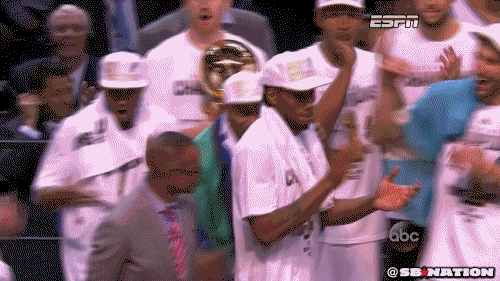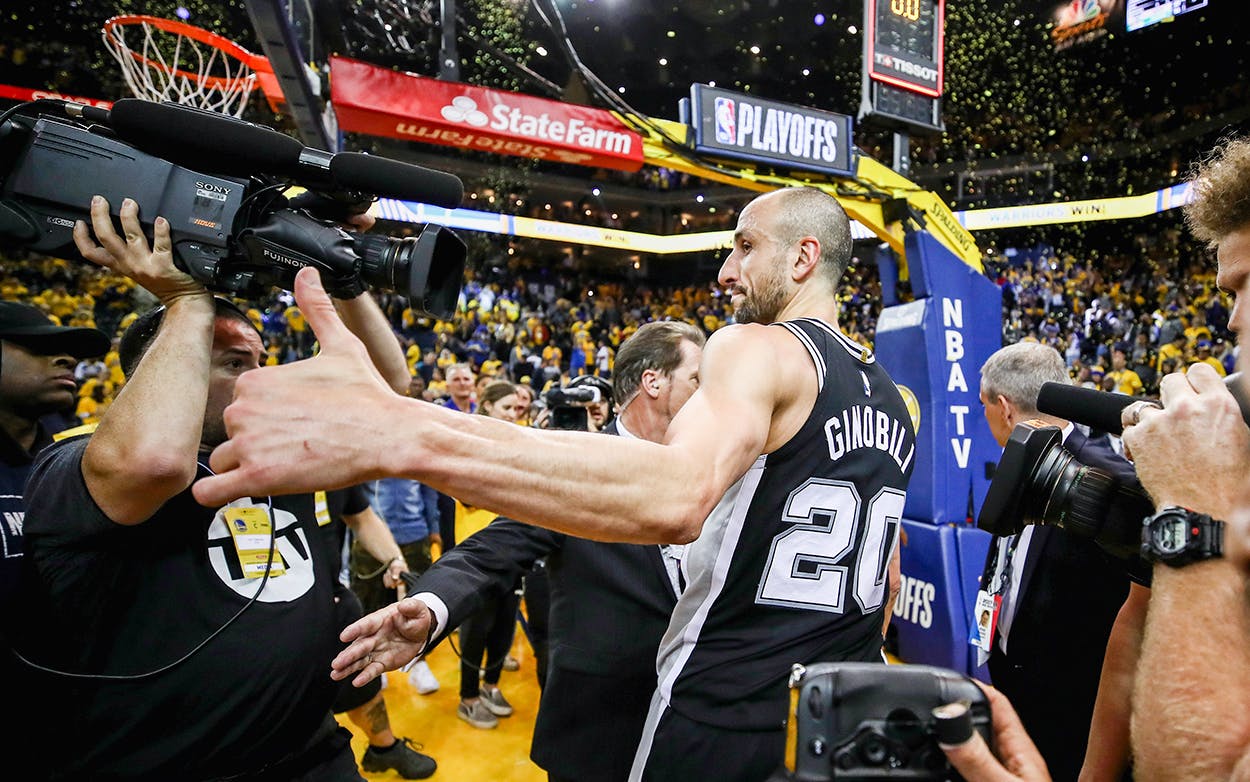In 2014, the Spurs bandwagon was the easiest to hop on in sports. The last championship-winning team in San Antonio had everything: There was Tim Duncan, the aging hero who saddled up for one last ride, and who still had what it took to win it all. Tony Parker and Manu Ginobili completed a triumvirate that allowed the Spurs to effortlessly transition from the David Robinson era to American sports’ most reliable dynasty for nearly twenty years. And there was Kawhi Leonard, the rising rookie and heir apparent who, like Robinson and Duncan before him, was a quiet powerhouse who embodied legendarily grouchy coach Gregg Popovich’s team-first philosophy. The Spurs dynasty was aging, but it was intact, and even the end of Duncan’s career—as iconic a player as any NBA franchise has ever had—felt like a transition period that would lead to another decade of playoff runs and championship-caliber teams.
That last championship season may have felt like a coronation for a new era of Spurs greatness, but it was actually more like the bookend on a fifteen-year run.

On Monday, after sixteen seasons, Manu Ginobili announced his retirement. That came three weeks after Parker, a free agent coming off of injury, signed with the Charlotte Hornets, and a little more than a month after Leonard—whose relationship with the organization had been hostile for much of the 2017-2018 season—was traded to the Toronto Raptors. Duncan, of course, retired in 2016.
The Spurs were good without Duncan. The year after he retired, they posted a .744 win percentage, which took them to the Conference Final (where they lost to the eventual champs in Golden State). It appeared as though the departure of the franchise’s face would be a minor hiccup, but not much different from the transition from Robinson to Duncan.
But Leonard was his own man, not the man San Antonio wanted him to be. He chafed under Popovich. He forced a trade, and the Spurs delayed re-signing Parker—leading the 36-year-old point guard to take a contract elsewhere. All eyes then shifted to Ginobili as the last link to the Spurs’ golden age, but who—with the rest of the team taking on a new identity—also had every reason hand it up at the age of 41. And that’s exactly what Ginobili did.
The future of the Spurs will revolve around a dramatically different cast. Popovich, who’s 69, is still in place, but of the thirteen remaining players on the Spurs roster, only reserve players Marco Belinelli and Patty Mills were on the roster for the 2014 championship season. That’s uncharted territory for a team that had the same nucleus for more than a decade, but Popovich isn’t tasked with winning with a team full of untested young players—more than half of the players with the Spurs have at least nine years of experience in the NBA, just not exclusively with the Spurs. Much of the roster is over the age of 30, which says that Popovich and the Spurs are in win-now mode—they’ll just have to do it with a different collection of veterans than fans have spent the past fifteen years cheering for.
All of this is the nature of sports. Dynasties break up, players retire, hot young players don’t always work out. But the Spurs have built their identity on being relatively immune to change. That immunity has led to remarkable consistency—the Spurs haven’t had a losing season since 1996, an unprecedented feat—and to five NBA Championships in that same time. If Popovich is able to achieve the same results with a new-look roster, without any of the stalwarts of the previous era, it’ll a different kind of achievement from a coach who’s already among the most accomplished in the history of the game.








